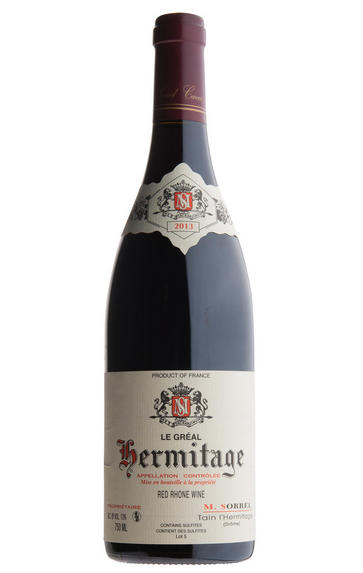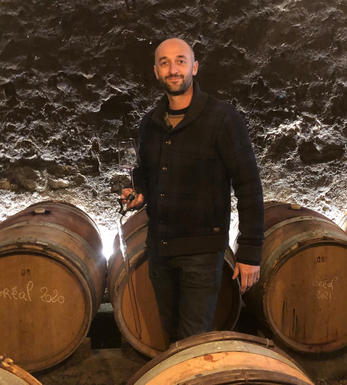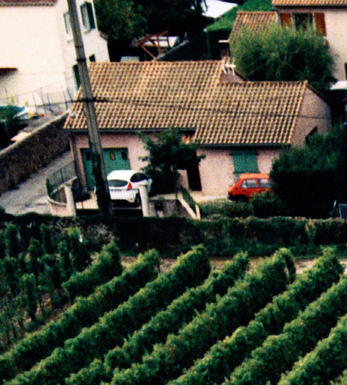
2013 Hermitage Rouge, Domaine Marc Sorrel, Rhône

Critics reviews
Jeb Dunnuck - 30/12/2014
About this WINE

Domaine Marc Sorrel
Marc retired at the end of 2018, but his son, Guillaume, is now firmly at the helm. The 3.5-hectare domaine comprises parcels of old vines on the incredibly steep slopes of Hermitage and Crozes-Hermitage. For this talented and dedicated grower, simplicity and tradition are key. The wines made with low intervention, minimal de-stemming and no new wood in a charmingly unassuming cellar in the centre of Tain-l’Hermitage.
Guillaume was really pleased with his ’20s, describing them as smooth with good ripeness, but also displaying sharpness and minerality. He explains how this was helped in part by the late rains of ’19, ensuring good water reserves to his old vines, but also an early harvest on 24th August that kept all alcohol levels moderate. The quantity is, as always, regretfully small, but the quality is outstanding. This domaine continues to excel year on year, and the wines prove themselves to be exceptionally age-worthy.

Hermitage
Hermitage is the most famous of all the northern Rhône appellations. The hill of Hermitage is situated above the town of Tain and overlooks the town of Tournon, just across the river. Hermitage has 120 hectares and produces tiny quantities of very long-lived reds.
The vines were grown in Roman times, although local folklore claims their origins to be nearly 600 years earlier. The name ‘Hermitage’ first appeared in the 16th century, derived from a legend of the 13th century Crusade, involving a wounded knight called Gaspard de Stérimberg, who made refuge on the hill, planted vines and became a hermit.
During the 17th century, Hermitage was recognised as one of the finest in Europe. In 1775, Château Lafite was blended with Hermitage and was one of the greatest wines of its day. In the late 19th century, however, Phylloxera wiped out all the vineyards.
The wines are powerful, with a deep colour and firm tannins, developing into some of the finest examples in France, with the potential to age for many decades. The best Hermitage is produced from several climats or more, blended together. The main climats are Les Bessards, Le Meal, L’Hermite, Les Greffieux and Les Diognieres. Most of the finest climats face broadly south, giving maximum sunshine. Most growers only have one or two climats and they might not complement each other; Hermitage quality can therefore vary hugely. Only the top producers have extensive diversified holdings.
80% of the wine produced is red, however up to 15% of white grapes can be used in the blend. Most growers use 100% Syrah and utilise the white grapes to make white wines only. Chapoutier, Jaboulet and Tain l'Hermitage are the principal proprietors of the appellation’s vineyards.
The white wines are made from the Marsanne and Roussanne grapes. Great white Hermitage can age, taking on the fruit characters of apricots and peaches, often giving a very nutty finish. The best examples in great vintages can last 50 years.
Mature red Hermitage can be confused with old Bordeaux. In a blind tasting of 1961 First Growth Clarets, the famous 1961 Hermitage La Chapelle was included. Most people, including its owner, Gerard Jaboulet, mistook it for Château Margaux.

Syrah/Shiraz
A noble black grape variety grown particularly in the Northern Rhône where it produces the great red wines of Hermitage, Cote Rôtie and Cornas, and in Australia where it produces wines of startling depth and intensity. Reasonably low yields are a crucial factor for quality as is picking at optimum ripeness. Its heartland, Hermitage and Côte Rôtie, consists of 270 hectares of steeply terraced vineyards producing wines that brim with pepper, spices, tar and black treacle when young. After 5-10 years they become smooth and velvety with pronounced fruit characteristics of damsons, raspberries, blackcurrants and loganberries.
It is now grown extensively in the Southern Rhône where it is blended with Grenache and Mourvèdre to produce the great red wines of Châteauneuf du Pape and Gigondas amongst others. Its spiritual home in Australia is the Barossa Valley, where there are plantings dating as far back as 1860. Australian Shiraz tends to be sweeter than its Northern Rhône counterpart and the best examples are redolent of new leather, dark chocolate, liquorice, and prunes and display a blackcurrant lusciousness.
South African producers such as Eben Sadie are now producing world- class Shiraz wines that represent astonishing value for money.


Buying options
Add to wishlist
Description
On tasting this last November one felt that it was sulking. M Sorrel agreed, with a gentle shrug, and advised that this was not necessarily a bad sign. Sure enough, the next encounter, in February, was a much happier affair. Beneath the still somewhat inscrutable exterior there is a fruit profile which recalls damson, plum and myrtle with whispers of cinnamon and black pepper. The majority of the vines are located just behind the railway station at Tain, therefore on the lower slope.
Simon Field MW - Rhône Buyer
It is more than likely that 2013 is not the first vintage described by Marc Sorrel as ‘classique’ and, one very much hopes, not to be last. He cites the fresh spring, the fine summer and the late picking as key factors in the cycle and describes the wines as soft and linear in character. A gentle vintage made by a gentleman.
A solid step up over the Crozes Hermitage, the 2013 Hermitage is a classic, classy effort that exhibits quality notes of pepper, iron, wet rock and sweet dark fruits. It has medium-bodied richness, bright acidity and firm tannin, all suggesting short-term cellaring.
Jeb Dunnuck - Wine Advocate Issue#216 Dec 2014
wine at a glance
Delivery and quality guarantee